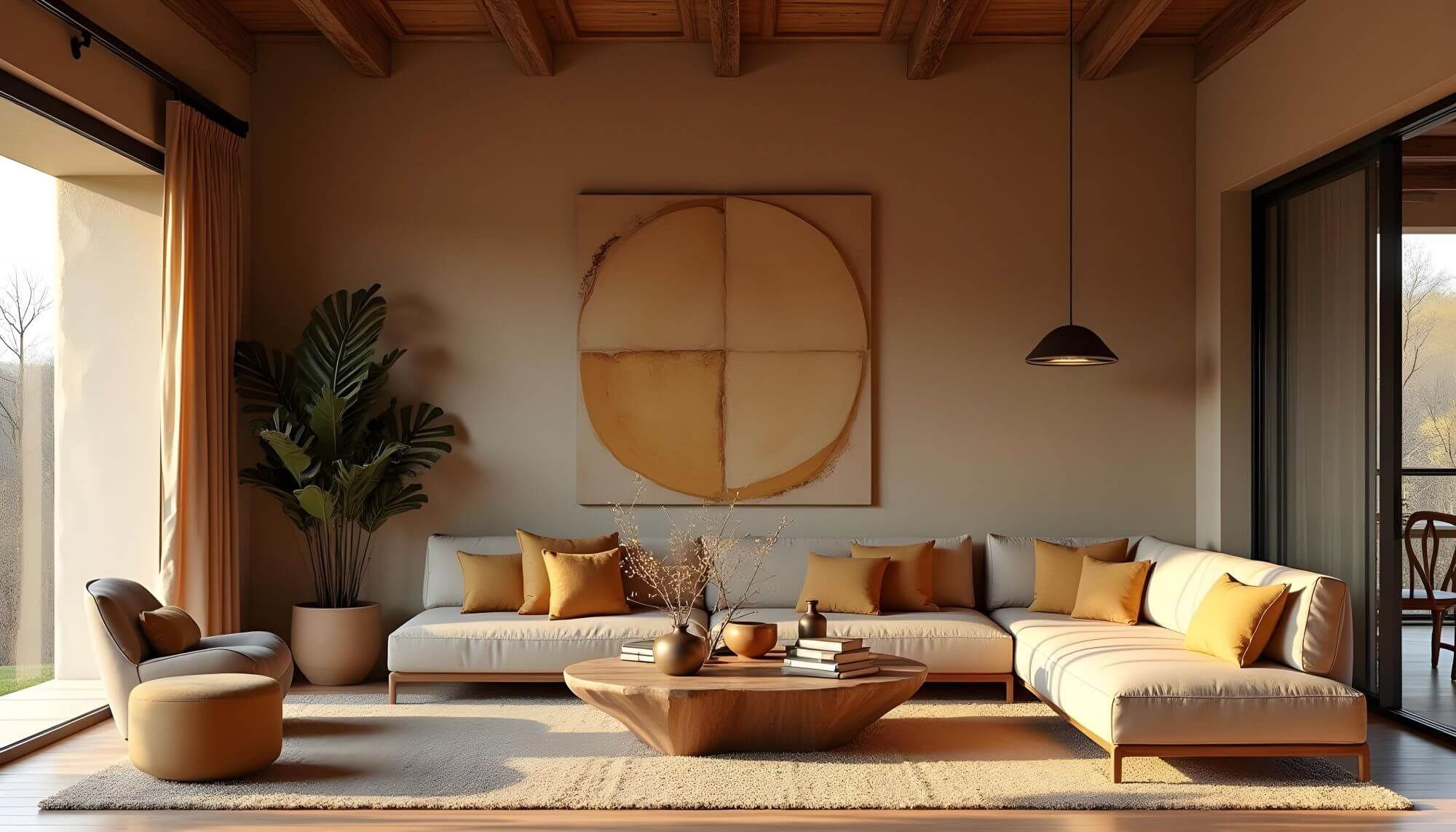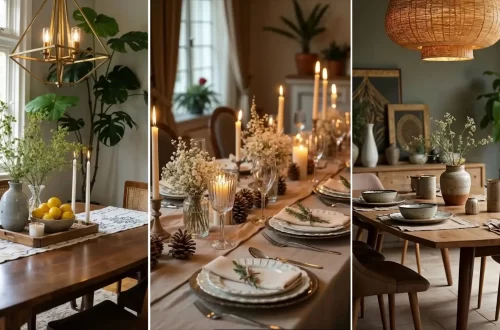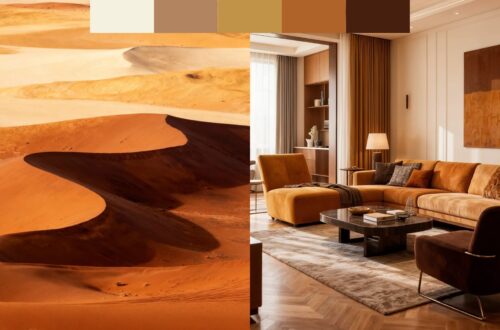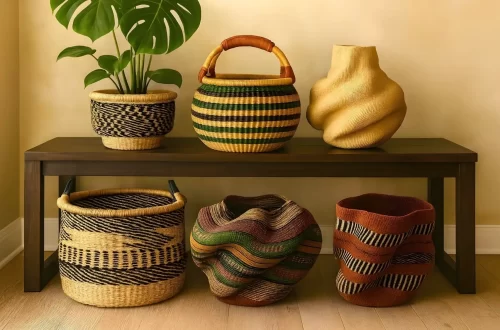Let’s be honest—so many living rooms look like they came straight out of a catalog. Polished, yes. Memorable? Not really. But African living room decor offers something else entirely. It’s relaxed and refined. Organic, but with an edge. Not mass-produced. Not trend-chasing. Just beautifully made by skilled hands and over a quiet history.
If you’re dreaming of a living room that feels calming yet expressive, earthy yet elevated—these are my go-to ideas. They’re simple, thoughtful, and rooted in African design traditions that have been refined over generations.
Our 5 Best African Living Room Decor Ideas for an Organic Feel
1. Layer Rich Earth Tones for a Grounded Look
If you’re building your space from the ground up, start with the earth—literally.
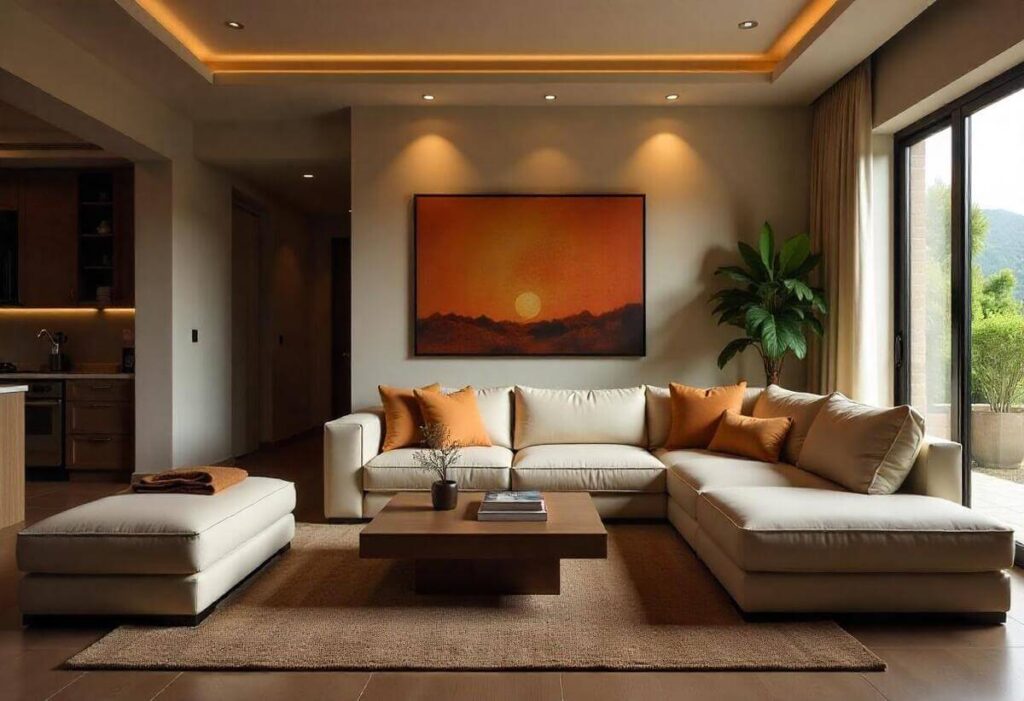
Deep terracotta, warm beige, and rich coffee tones create a grounding base that’s both calming and refined. These are colors that echo the land itself—whether it’s the ochre soil of Mali or the sun-drenched hills of Ethiopia.
Cushions, walls, rugs—use every surface as a canvas. I love pairing a sandy beige with a richer rust or chestnut brown. It gives the room warmth without feeling heavy.
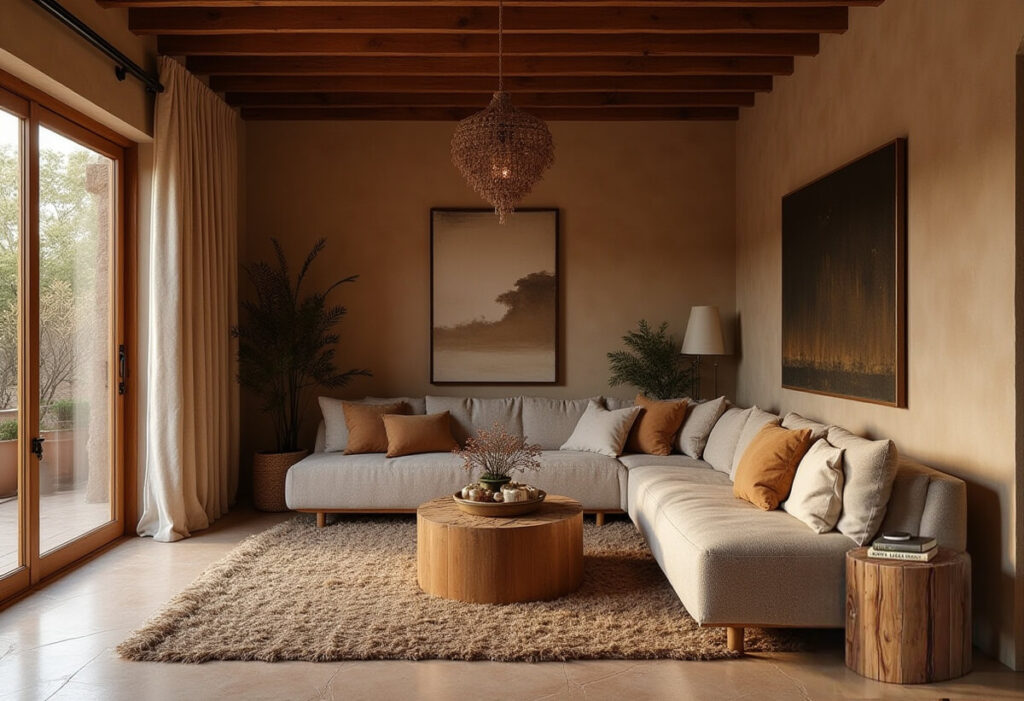
2. Choose a Natural Rug with East African Roots
Nothing pulls a space together quite like a beautiful rug. And if you’re curating an African living room decor style, natural is the way to go.
Jute and sisal rugs, commonly woven in Kenya and Tanzania, bring texture and durability while keeping the space grounded. Their raw, organic feel is perfect underfoot and instantly makes a room feel more intentional.
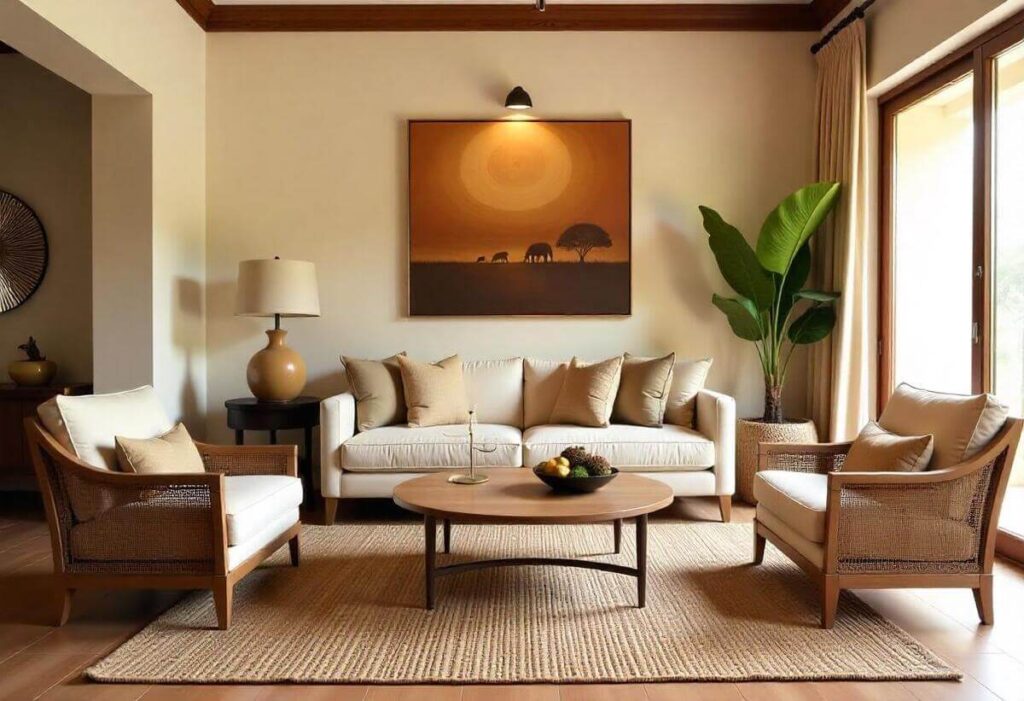
For a softer step—especially if you like going barefoot at home—you can layer a wool rug on top. A small, plush piece over a larger jute base adds both comfort and contrast. It’s a little trick that balances the rustic and the cozy.
3. Add Decor That’s Artisanal and Full of Texture
A room without decor feels unfinished—but the right decor? That’s where the magic happens.
Handmade items like carved wooden bowls or clay vases add depth and meaning. I’m especially drawn to Turkana bowls from Kenya or the beautifully pottery from Nigeria’s Nupe people. There’s something deeply grounding about using objects that were shaped by hand, with time and purpose.
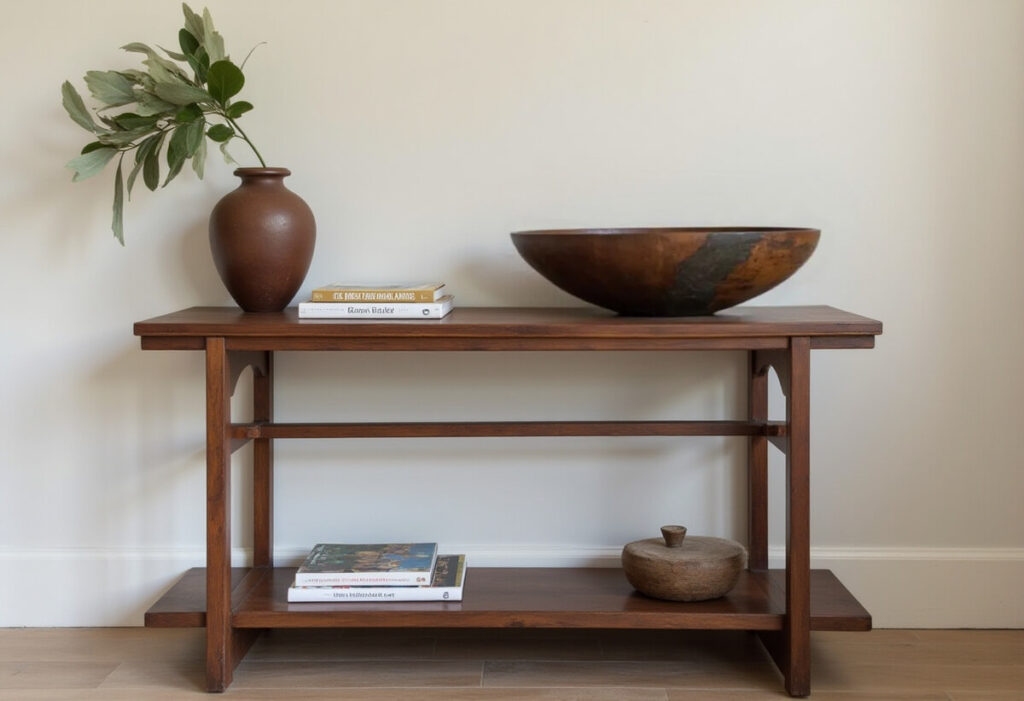
To round out the look, I like incorporating basketry—either styled casually on furniture or displayed as wall art. Woven pieces from Uganda or Zambia offer gorgeous texture and blend effortlessly into an organic palette.
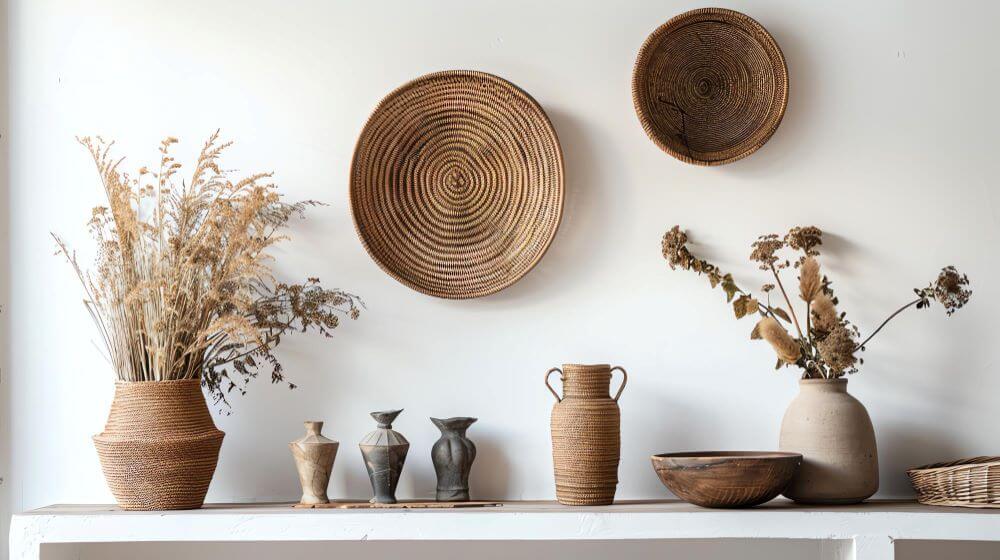
You May Also Like: The 11 Top Brands for Stunning African Wall Baskets
4. Use African Textiles to Play with Pattern
If you’re pattern-shy, don’t worry—this style makes room for subtlety. African textiles are often bold, but they can be used in soft, sophisticated ways.
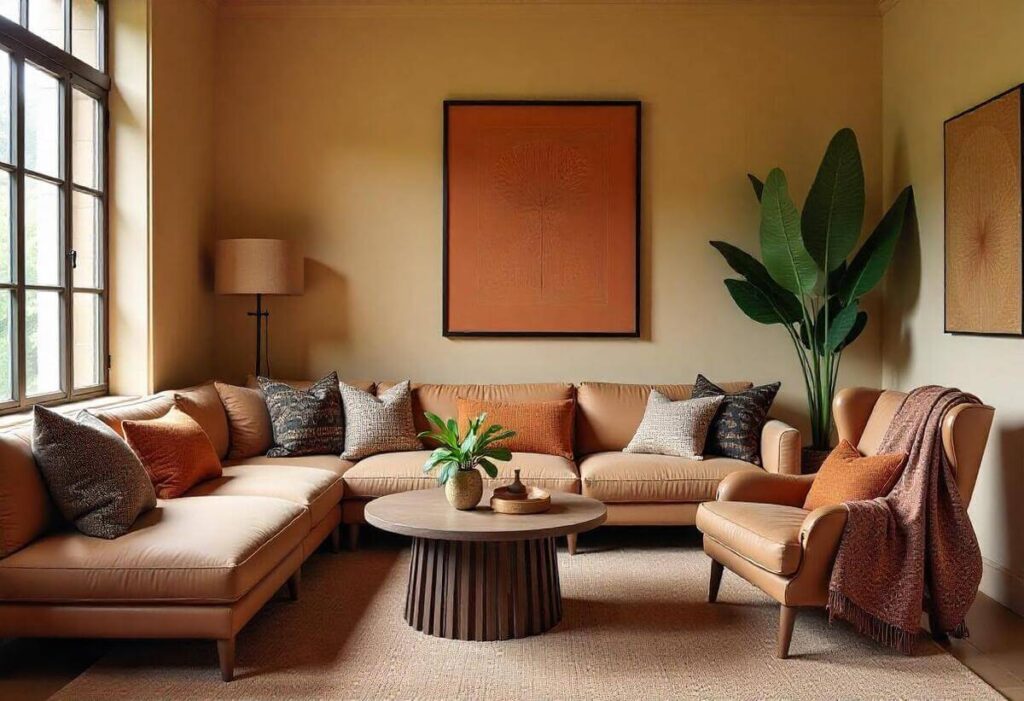
Mud cloth, Kuba cloth, or Berber-inspired designs bring in character while still working within a neutral scheme. Stick with creamy tones, sandy browns, and clay-like shades to keep the vibe consistent.
My favorite way to start is with a standout throw pillow or a textile draped over a chair. Even better—frame a textile as wall art.
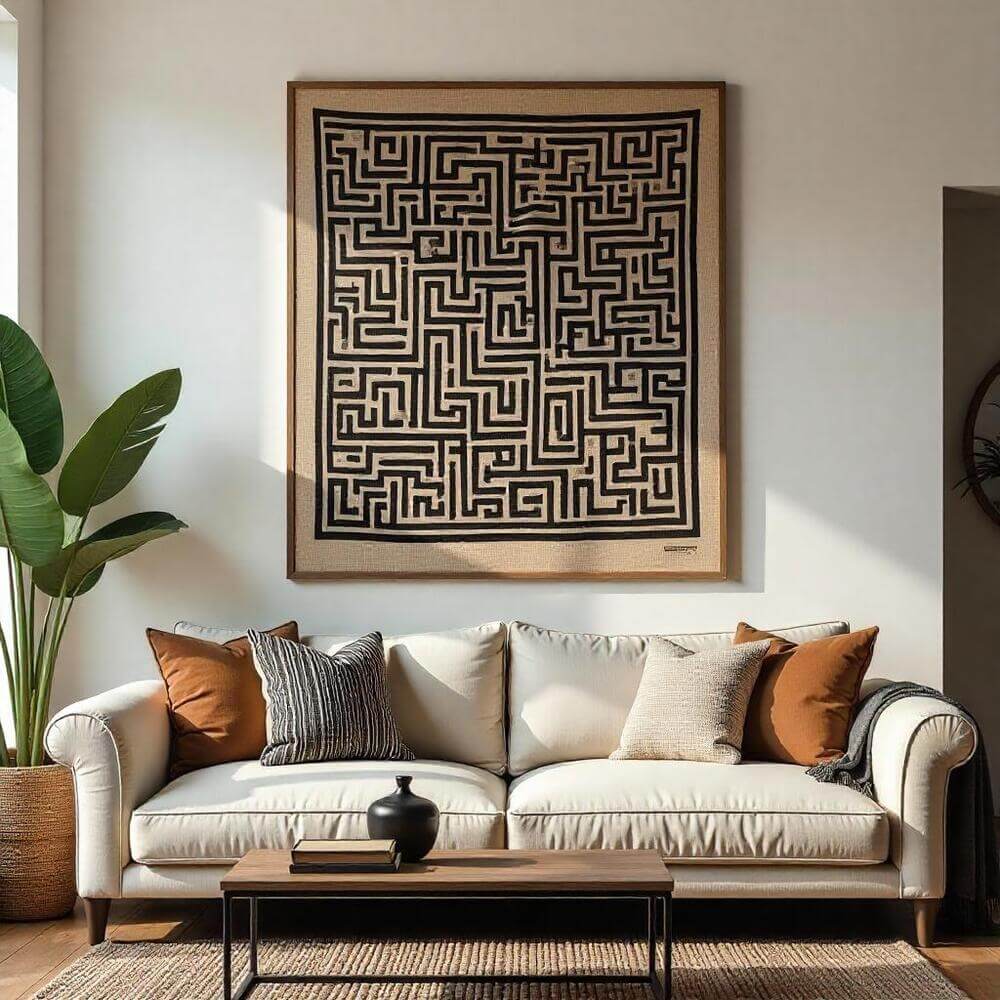
I always pick one patterned piece to anchor the room and let everything else follow its lead. It’s a small move that makes a big visual impact.
5. Hang Art That Echoes the Landscape
To finish the space, bring in art that mirrors the mood you’ve created.
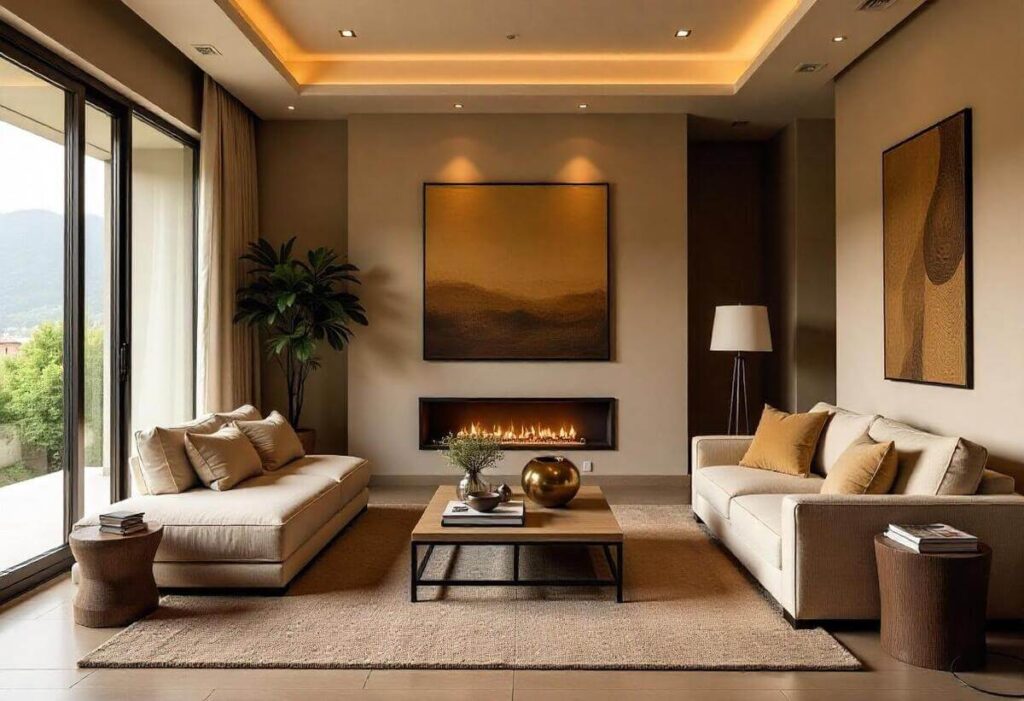
Think abstract paintings in earthy palettes—sandy beiges, clay reds, sun-faded golds. Or go for photography that captures nature: desert dunes, rocky coastlines, or misty savannas. These kinds of pieces blend in, support the space, and quietly reinforce the organic tone of your African living room decor.
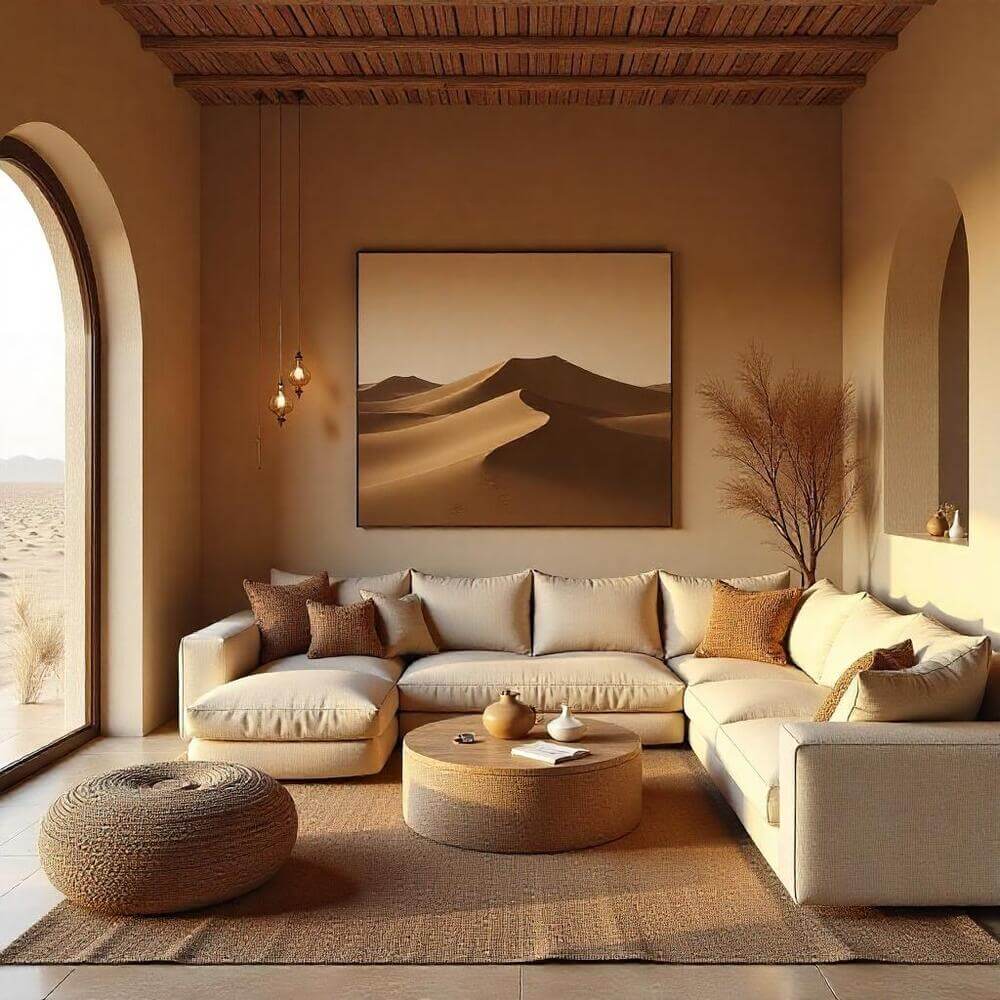
If you’ve visited the continent, consider framing your own photography. A soft-focus image of the beach in Senegal or a hillside in Rwanda is more than decor—it becomes a memory on display.
You May Also Like: 5 Beautiful African Wall Decor Ideas for a Standout Home
Final Thoughts on African Living Room Decor
The beauty of African living room decor lies in how effortless it feels. It doesn’t ask you to overthink—it invites you to slow down. To choose pieces with intention. To welcome natural color, texture, and craft into your everyday life.
Start with a grounded palette. Add layered texture. Choose materials that feel alive. With just a few thoughtful changes, your living room can become a quiet tribute to African design—timeless, soulful, and undeniably stylish.
Looking for more organic ways to style your space? Don’t miss this next read: The Exciting Fusion of Wabi-Sabi Style and African Interiors

